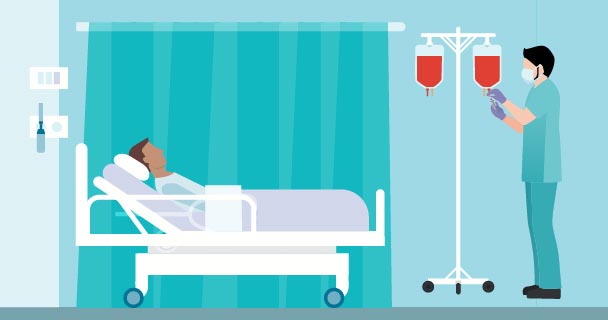blog


While bullying is predominantly verbal in nature, physical violence presents another threat where nurses are unfortunately overrepresented as victims. Violence in healthcare is so prevalent that OSHA has published “Preventing Workplace Violence: A Road Map for Healthcare Facilities” (OSHA, 2017). The following is a sampling of the resources and publications addressing this issue point to the prevalence of the problem:
Technology Solutions
Technology may also offer a solution to predicting and preventing violence. New Hampshire Hospital’s “Project Pause” is a smartphone app for predicting patient violence in the behavioral health setting. Patients answer self-assessment questions every two hours, and researchers compare the data with violent incident reports. For example, the app asks, “Since the last time we asked, have you been physically aggressive toward anyone?”
Violence Is Not Always Intentional
Most violence perpetrated by patients is unintentional. Dementia, psychosis, and sudden or unexpected pain can all be reasons a patient might become violent. Danger from belligerent patients includes punching, biting, and hurling objects.
Violence toward nurses is certainly not limited to patients. Nurses must also deal with angry family members, the perpetrators of domestic violence against their patients, and even violent criminals. One nurse reports being cornered in a room by a violent man brandishing two knives. “I yelled for the security officer, and he had to call for more help from deputies who were luckily just a few rooms away. One of the deputies tased the man and disarmed him. You need to remain alert, constantly assessing patients and being prepared to de-escalate the situation.”
Too Many Nurses Are Violence Victims
Nurses in emergency departments are disproportionately victims of workplace violence, according to the Emergency Department Violence Surveillance Study, published by the Emergency Nurses Association. The study found that 55.6% of nurses reported they had experienced physical violence, verbal violence or both. Furthermore, the study found that 57.6% of nurses surveyed rated the safety of their ED as a 5 out of 10 or lower (Emergency Nurses Association, 2011).
Sadly, the majority of survey participants who were victims of workplace violence did not file a formal report for the physical violence or the verbal abuse they experienced. Writing for Hospitals & Health Networks, Pamela Thompson, RN says, “There is an underlying cultural problem within the healthcare setting regarding workplace violence—workers tend not to report incidents, specifically in the ED. Recent research indicates that many healthcare workers underreport violence because it is inconvenient, and they accept such conditions as part of the job” (Thompson, 2015).
Solutions to Preventing Violence Against Nurses
How can we protect nurses? A frequent answer is simply safety in numbers through adequate staffing, but thoughtful design of the patient care environment is also a key to prevention. Facilities should provide adequate lighting and visibility, physical barriers and escape routes, and, some sources say, patient care areas with limited furnishings and other items that could become projectiles. Authorities say training should offer both instruction and hands-on experience to be effective.
References
Emergency Nurses Association (2011). Emergency Department Violence Surveillance Study. Retrieved from https://www.ena.org/docs/default-source/resourcelibrary/practice-resources/workplace-violence/2011-emergency-department-violence-surveillance-report.pdf?sfvrsn=5ad81911_4
Occupational Health and Safety Administration (OHSA),(2017). Preventing Workplace Violence: A Road Map for Healthcare Facilities 2015. Retrieved from https://www.osha.gov/Publications/OSHA3827.pdf
Thompson, P. (2015). “Addressing Violence in the Health Care Workplace,” Hospitals & Health Networks. Retrieved from https://www.hhnmag.com/articles/3365-addressing-violence-in-the-health-care-workplace
Learn about HealthStream’s solutions designed to help you onboard and retain your nursing staff.
HealthStream’s learning management system and healthcare training solutions support medical training initiatives and allow for the best patient care.
View All Learning & PerformanceExpand the decision-making skills and effectiveness of your healthcare workforce with HealthStream's workforce development programs and services.
View All Clinical DevelopmentComprehensive, industry-leading provider onboarding and credentialing software that validates health outcomes and supports provider assessment.
View All CredentialingMake sure your healthcare staff can schedule out appointments and work schedules with ease using our line of nurse scheduling software solutions.
View All SchedulingWhen you enact HealthStream's quality compliance solutions, you can do so with the confidence your healthcare organization will meet all standards of care.
View All Quality & ComplianceUtilize patient access solutions and advanced reimbursement solutions to manage clinical denials and improve your organization’s reimbursement strategy.
View All ReimbursementLearn about our advanced resuscitation training solutions. Our solutions are designed to help improve patient outcomes.
View All Resuscitation